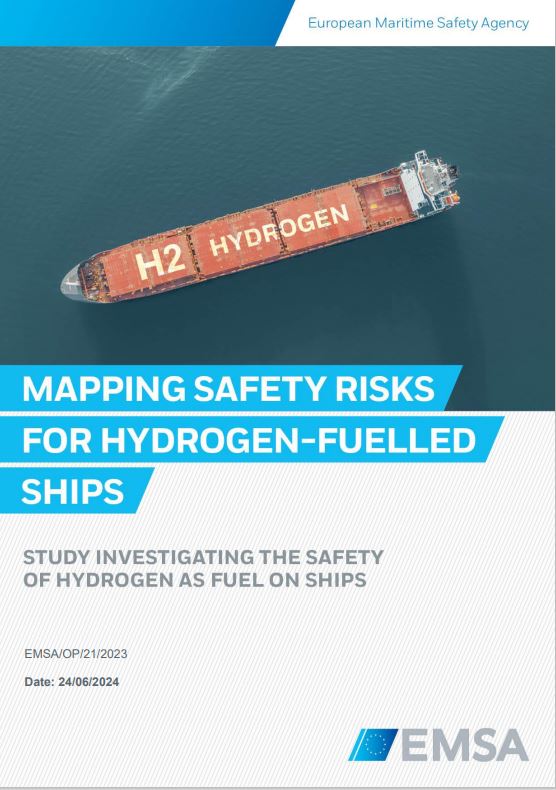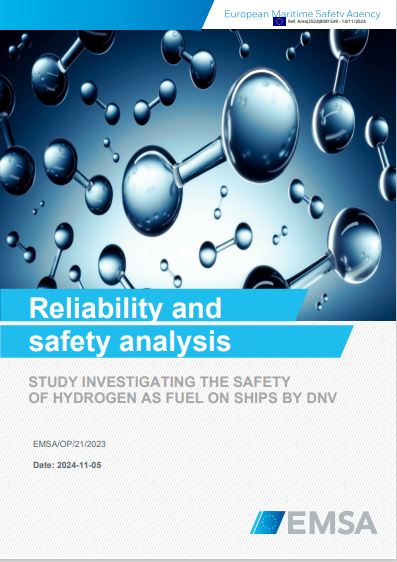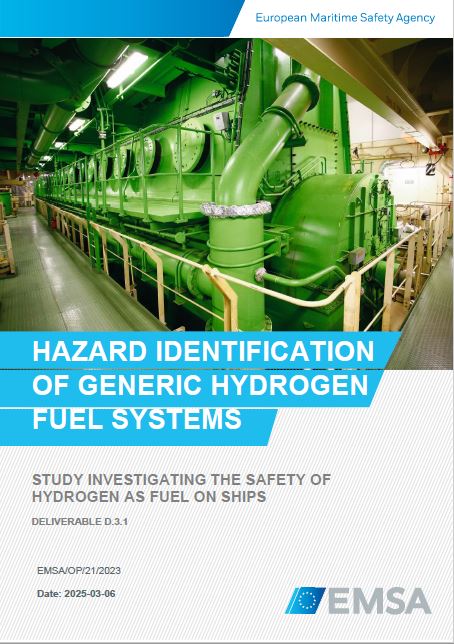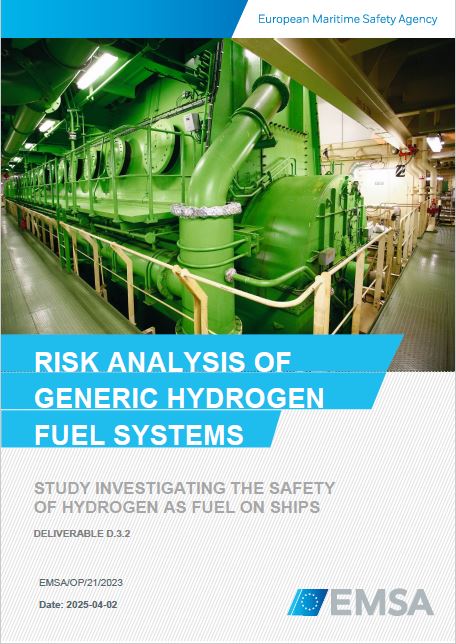 Part 1 of the report includes an analysis of hydrogen’s main characteristics to frame which safety hazards, system threats and risks to be considered and mitigated when using hydrogen as ship fuel. Natural gas – for which the IGF Code has put internationally recognised safety barriers in place to ensure its safe use – is used as a benchmark. Established principles for mitigation and control, and lessons learned from hydrogen accidents are briefly reviewed. Hydrogen modelling techniques and tools are validated. Statutory regulations and classification rules, standards, and best practices relevant to hydrogen-fuelled ships are reviewed to identify hazards and risks considered and mitigated in existing rules and regulations. Part 1 of the report includes an analysis of hydrogen’s main characteristics to frame which safety hazards, system threats and risks to be considered and mitigated when using hydrogen as ship fuel. Natural gas – for which the IGF Code has put internationally recognised safety barriers in place to ensure its safe use – is used as a benchmark. Established principles for mitigation and control, and lessons learned from hydrogen accidents are briefly reviewed. Hydrogen modelling techniques and tools are validated. Statutory regulations and classification rules, standards, and best practices relevant to hydrogen-fuelled ships are reviewed to identify hazards and risks considered and mitigated in existing rules and regulations. |
 Part 2 reports on the results of the reliability and safety analysis of equipment and safety-critical systems used in hydrogen-fuelled ships. The results of this analysis, including the identification of potential failure modes, are used to develop a framework for modelling risks in hydrogen-fuelled ships that will be the basis for the following tasks in the study. Part 2 reports on the results of the reliability and safety analysis of equipment and safety-critical systems used in hydrogen-fuelled ships. The results of this analysis, including the identification of potential failure modes, are used to develop a framework for modelling risks in hydrogen-fuelled ships that will be the basis for the following tasks in the study.
|
 Part 3 of this study includes two deliverables. Part 3 of this study includes two deliverables.
The first deliverable (D.3.1) presents a comprehensive Hazard Identification (HAZID) for generic hydrogen fuel systems, which addresses key safety risks and possible measures to prevent and mitigate these risks. The analysis focuses on generic fuel system configurations, covering the systems and spaces relevant to the fuel systems, regardless of ship type. The scope includes the processes of bunkering, storage, supply, conditioning, and consumption. By systematically identifying hazards and potential safeguards, this report aims to provide valuable insights and recommendations for improving the safety of hydrogen technologies. |
 The second deliverable (D.3.2) presents the findings from the risk analysis of two generic hydrogen fuel system designs. The report examines hazardous events associated with hydrogen leakage, analyses leak frequencies using reliability data, and assesses the potential safety implications. This report seeks to provide valuable insights and recommendations for enhancing the safety of hydrogen technologies. It concludes that the likelihood of hydrogen leaks from piping systems and the loss of tank vacuum insulation cannot be ruled out. These findings contribute to the broader objective of delivering a Guidance Document for ships using hydrogen as fuel. The second deliverable (D.3.2) presents the findings from the risk analysis of two generic hydrogen fuel system designs. The report examines hazardous events associated with hydrogen leakage, analyses leak frequencies using reliability data, and assesses the potential safety implications. This report seeks to provide valuable insights and recommendations for enhancing the safety of hydrogen technologies. It concludes that the likelihood of hydrogen leaks from piping systems and the loss of tank vacuum insulation cannot be ruled out. These findings contribute to the broader objective of delivering a Guidance Document for ships using hydrogen as fuel. |